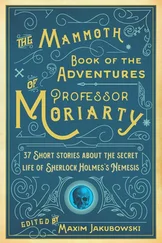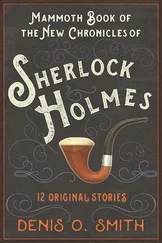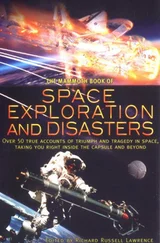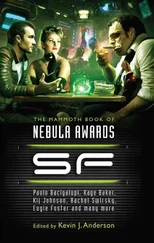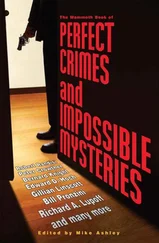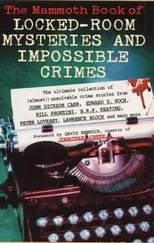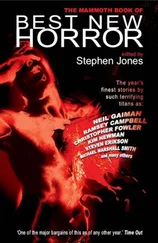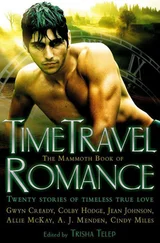In 1903 the Wright brothers made their first historic flight. In the same year, the Russian, Konstantin Eduardovich Tsiolkovsky (1857–1935) published his book, Space Exploration by Means of Reaction Propulsion Craft , in which he expounded the scientific foundations of space rocketry. It was the first scientific theory of space flight ever published.
Originally, Tsiolkovsky was a schoolteacher, but was so inspired by Jules Verne’s stories that he, too, tried to write science fiction. He soon introduced real technical problems into his tales of interplanetary travel, such as rocket control in moving into and out of gravitational fields. Before he wrote his book, Tsiolkovsky had actually evolved from fiction writer to scientist and theoretician.

German rocket scientists like Ernest Stuhlinger and Wernher von Braun were also inspired by a 1926 Fritz Lang film, The Woman in the Moon , and formed amateur rocket clubs, eventually developing the world’s first ballistic missile. Although the initial development of the rocket was for military purposes, the men who developed it could claim that their ultimate aspiration was space travel.
The prophets of fiction did not always get it right. In 1951 Arthur C. Clarke, himself, predicted that “orbital refuelling is the key to interplanetary flight.” The single-stage rocket which he anticipated might have needed this. But the next year Wernher von Braun was explaining the concept of the multiple-stage rocket.
A science fiction novel was later responsible for modifications to the US space program. An additional safety measure was added to the Gemini program, with Gemini III (1965) becoming the first manned Gemini mission, practising a maneuvre to act as a safety precaution. The point of the maneuvre was to avoid a scenario which had been envisaged in Martin Caidin’s novel Marooned in which a spacecraft’s retrorockets failed and it was consequently unable to slow down enough for re-entry.
On Gemini III’s third orbit it completed a fail-safe plan and made a two and-a half-minute burn with its thrusters that reduced the spacecraft’s orbit to 72 kilometres to ensure re-entry even if the retrorockets failed to work.
Stanley Kubrick directed 2001: a Space Odyssey , having first approached science fiction writer Arthur C. Clarke in early 1964 to collaborate on what both hoped would be “the proverbial good science fiction film”. They spent a year working out the story, and Kubrick began pre-production in mid-1965.
On the recommendation of Clarke, Kubrick hired spacecraft consultants Frederick Ordway and Harry Lange as technical advisors on the film. Ordway and Lange had assisted some of the major contractors in the aerospace industry and NASA with the development of advanced space vehicle concepts. Ordway was able to convince dozens of aerospace giants such as IBM, Honeywell, Boeing, General Dynamics, Grumman, Bell Telephone and General Electric that participating in the production of 2001 would generate good publicity for them. Many companies provided copious amounts of documentation and hardware prototypes free of charge in return for “product placements” in the completed film. They believed that the film would serve as a big-screen advertisement for space technology and were more than willing to help out Kubrick’s crew in any way possible. Lange was responsible for designing much of the hardware seen in the film.
Senior NASA Apollo administrator George Mueller and astronaut Deke Slayton visited the 2001 studios during production and were so impressed they called the studios at Borehamwood in Hertfordshire, England “NASA East”.
When 2001 was first released it was criticised for its lack of plot structure, lack of dialogue and for its confusing ending. Some critics argued that Kubrick had sacrificed plot and meaning for visual effects and technology, but a younger audience discovered the film and it became a huge commercial success. 2001 inspired later film-makers, engineers and scientists. It is a matter of personal opinion, but the design of the space shuttle looks as if it came straight from the set of 2001 .
Gene Cernan, the commander of Apollo 17, the last manned mission to land on the Moon, agreed about the need for inspiration. He said that it is vital to “inspire young people to reach out further than they thought they could reach before”. “The inspiration of our young people is truly what the future is all about,” he said.
Science fiction has provided some of the terms by which we describe developments in space. In 1997, aboard the space station Mir, the astronaut Jerry Linenger wrote to his son: “Space is a frontier, and I’m out here exploring!… what a privilege!” The opening sequence of the television science fiction series, Star Trek , began “Space, the final frontier…”
In 2003, a new form of propulsion drive was described as “the Star Trek propulsion drive”. It is currently driving the European Space Agency’s Smart 1 probe to the moon.
Soviet Semyorka boosters
Which way to the moon?: lunar landing techniques
Mercury capsule and escape tower
Angles for orbit, retro-firing and re-entry
Three orbit paths, tracking and communications stations of Project Mercury
Sections of the Gemini capsule
Comparative sizes of NASA spacecraft
Comparative sizes of NASA launchers for manned space flight
Apollo 13’s journey 11–17 April 1970
Repairs to Skylab
The Mir space station
Mir: an unmanned Progress supply vessel crashes into Mir (25 June 1997)
The European Space Agency’s Smart 1
Smart 1’s elliptical orbits
Cross-section of Smart 1’s ion engine
Timeline of the Galileo probe (1610–2003)
Geocentric theory of the universe
High-altitude man-carrying rocket as conceived by Arthur C. Clarkein 1951
Aldrin, Buzz & McConnell, Malcolm, Men from Earth , Bantam, 1989.
Bridgeman, Bill & Hazard, Jacqueline, The Lonely Sky , Henry Holt and Co., New York, 1955.
Burrough, Bryan, Dragonfly: NASA and the Crisis Aboard Mir , Fourth Estate, 1999.
Carpenter, Scott & Stoever, Kris, For Spacious Skies , Harcourt, 2002.
Clarke, A.C., The Exploration of Space , Temple Press, 1951.
Coster, Graham (ed.), The Wild Blue Yonder , Picador, 1997.
Duke, Neville & Lanchberry, Edward, Sound Barrier , Cassell & Co., 1954.
Gilzin, K., Sputniks and After , Macdonald, 1954.
Glenn, John & Taylor, Nick, John Glenn: a memoir , Bantam Books, 2000.
Glenn, J., Carpenter, S., Grissom, V., Slayton, D. & Schirra, W., Into Orbit , Cassell/Time Inc., 1962.
Lindsay, H., Tracking Apollo to the Moon , Springer, 2001.
Lovell, J., & Kluger, J., Apollo 13 , Pocket Books, 1995.
Swanson, G.E. (ed.), Before this decade is out… personal reflections on the Apollo program , University Press of Florida, 2002.
Turnhill, Reginald, The Moon Landings: an Eyewitness Account , Cambridge University Press, 2003.
Von Braun, Wernher & Ryan, Cornelius, Across the Space Frontier , Sidgwick & Jackson, 1952.
Wolfe, Tom, The Right Stuff , Jonathan Cape, 1979.
Other titles available from Robinson Publishing
The Mammoth Book of Endurance & Adventure
Ed. Jon E. Lewis
£7.99 [ ]
Читать дальше


